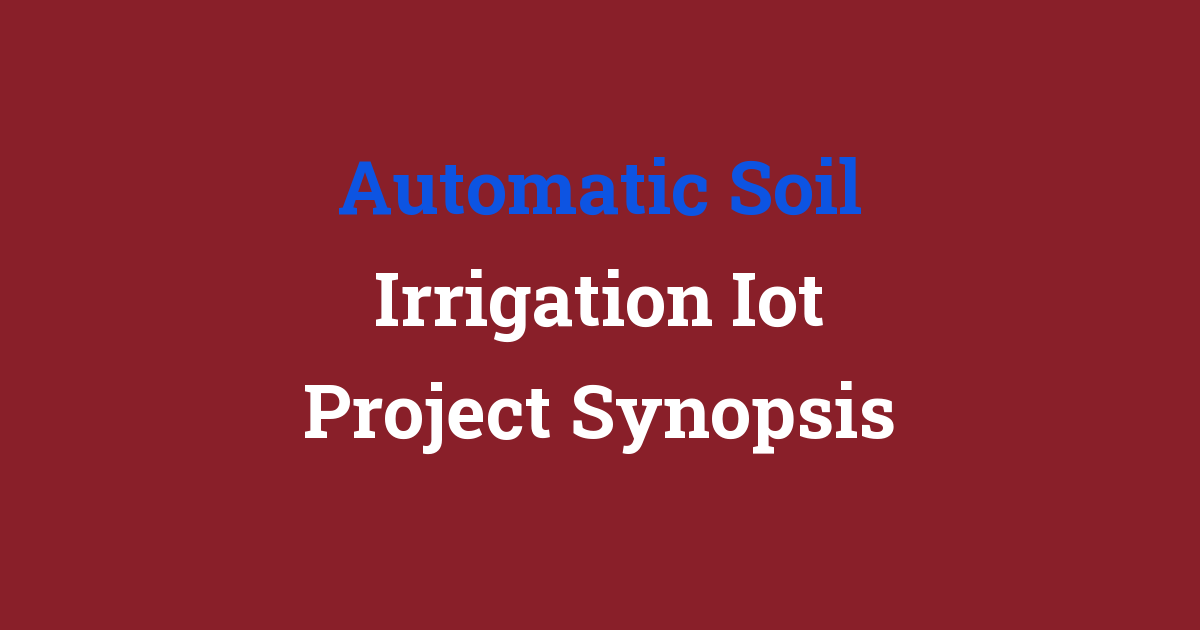Synopsis of an IoT project for automated soil irrigation.
Automatic Soil Irrigation IoT Project Synopsis
Introduction
In recent years, there has been a growing interest in the field of IoT (Internet of Things) for agriculture. One of the key applications of IoT in agriculture is automatic soil irrigation, which plays a crucial role in ensuring the optimal growth of crops. In this project, we aim to develop an automatic soil irrigation system using IoT technology to improve the efficiency and effectiveness of irrigation in agriculture.
Problem Statement
Traditional methods of irrigation in agriculture are often inefficient and labor-intensive. Farmers have to manually monitor the soil moisture level and adjust the irrigation accordingly. This process is not only time-consuming but also prone to errors, leading to either over-irrigation or under-irrigation. To solve this problem, we propose the development of an automatic soil irrigation system that can monitor the soil moisture level and control the irrigation process automatically.
Existing System
The existing irrigation systems in agriculture rely heavily on manual labor and are not equipped with the technology to monitor the soil moisture level accurately. Farmers have to rely on their experience and judgment to determine the irrigation schedule, which can often lead to suboptimal results. Moreover, traditional irrigation methods are not sustainable in the long run as they can lead to water wastage and environmental degradation.
Disadvantages
Some of the key disadvantages of the existing irrigation systems in agriculture include:
- Manual monitoring of soil moisture level
- Inefficiency in irrigation scheduling
- Water wastage
- Environmental degradation
Proposed System
Our proposed system aims to address the shortcomings of the existing irrigation systems by implementing an automatic soil irrigation system using IoT technology. The system will consist of soil moisture sensors placed in the field to monitor the soil moisture level continuously. The sensor data will be transmitted to a central control unit, which will analyze the data and control the irrigation process based on predefined conditions. This will ensure that the crops receive the right amount of water at the right time, leading to optimal growth and productivity.
Advantages
Some of the key advantages of our proposed automatic soil irrigation system include:
- Accurate monitoring of soil moisture level
- Efficient irrigation scheduling
- Water conservation
- Improved crop productivity
Features
Our automatic soil irrigation system will have the following key features:
- Soil moisture sensors for real-time monitoring
- Central control unit for data analysis and decision-making
- Automated irrigation control based on predefined conditions
- Remote monitoring and control via a mobile application
Conclusion
In conclusion, our automatic soil irrigation IoT project aims to revolutionize the way irrigation is done in agriculture. By leveraging IoT technology, we can develop a system that is efficient, sustainable, and environmentally friendly. The proposed system has the potential to improve crop productivity, conserve water, and reduce the labor required for irrigation. With further research and development, we believe that our project can make a significant impact on the agriculture sector and help farmers achieve better results in their farming practices.

